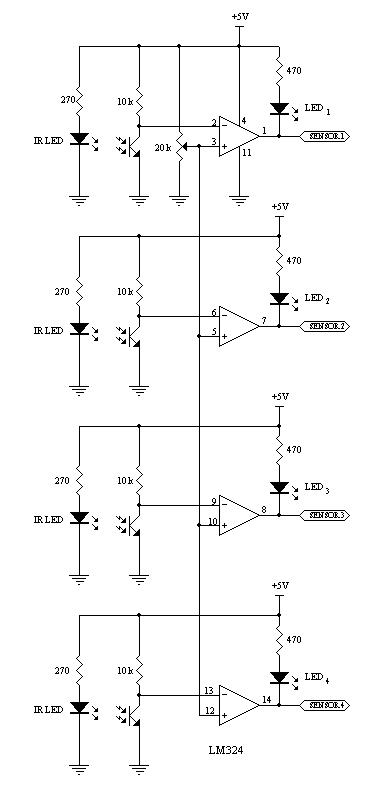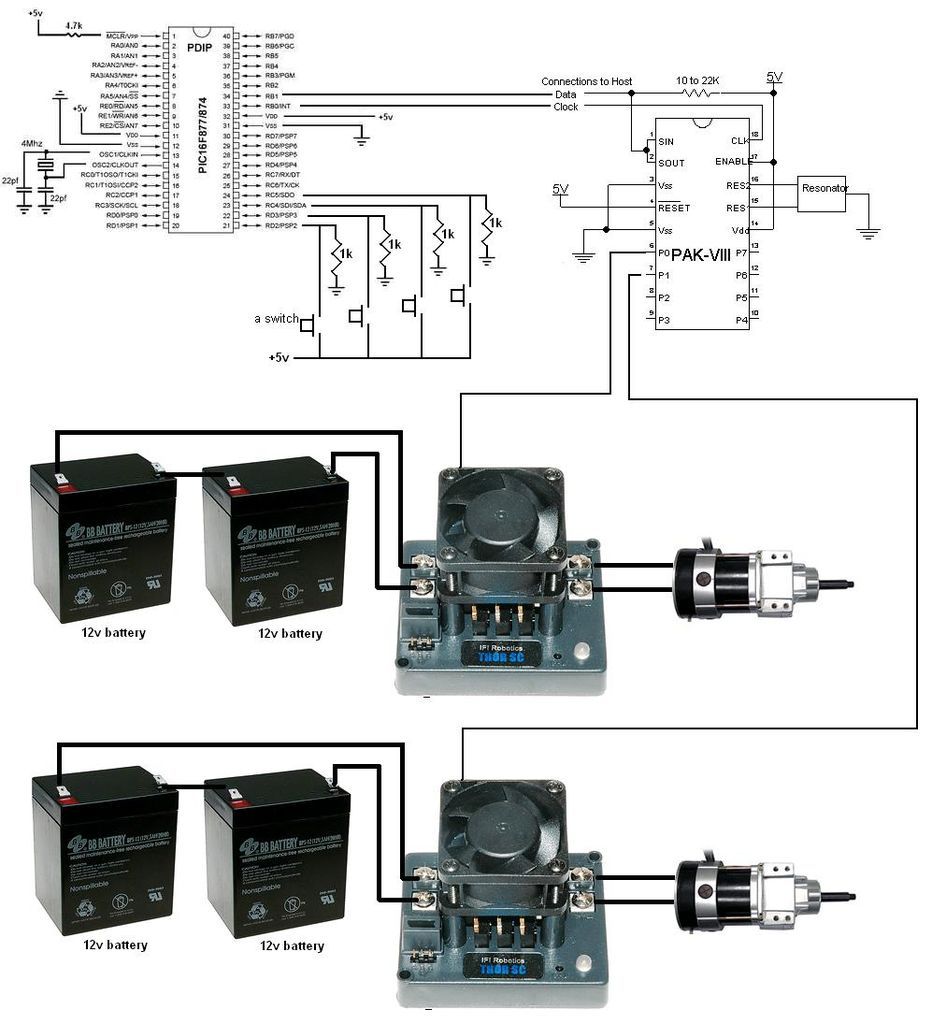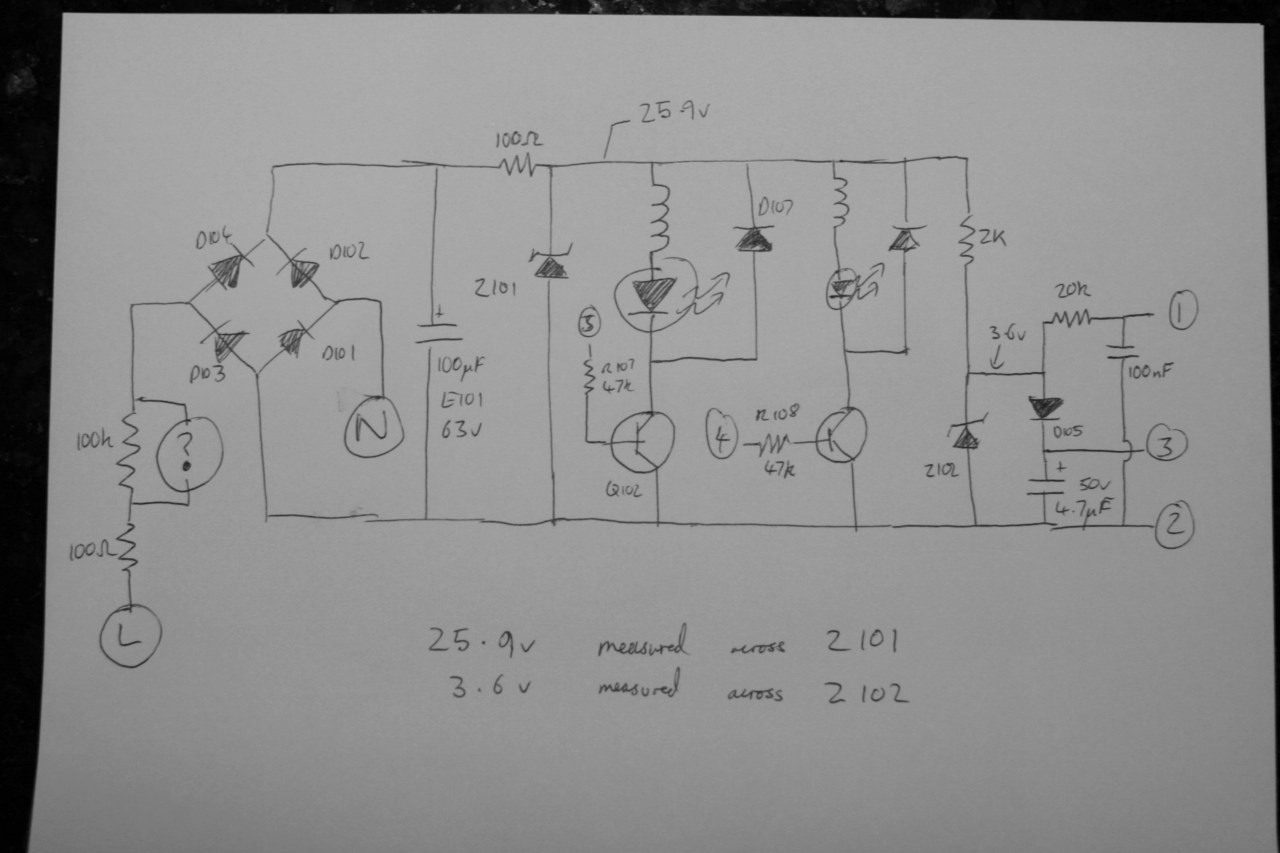
control line follower robot controlled

This robot utilizes two motors to control the rear wheels, while the single front wheel is free to move. It is equipped with four infrared sensors located on the underside to detect black tracking tape. When the sensors identify the presence of black color, the output from the comparator, LM324, transitions to a low logic state, while the outputs from the other sensors remain in a high logic state.
The robot's design incorporates a dual-motor system for the rear wheels, allowing for effective maneuverability and control. Each motor can be independently driven, enabling the robot to navigate turns and curves along the tracking tape. The free-rolling front wheel aids in maintaining balance and stability during movement.
The infrared sensors play a crucial role in the robot's tracking capabilities. Positioned strategically to maximize detection, these sensors emit infrared light and measure the reflected light to distinguish between the black tape and the surrounding surface. The LM324 comparator is employed to process the sensor outputs. When a sensor detects the black tape, it generates a low logic signal, while the sensors not detecting black tape produce high logic signals. This differential output is essential for the control logic that adjusts the motor speeds and directions, allowing the robot to follow the tape accurately.
The control system can be implemented using a microcontroller that interprets the sensor outputs and drives the motors accordingly. For instance, if the left sensor detects black tape while the right does not, the microcontroller can reduce the speed of the left motor or even reverse it slightly, causing the robot to turn right and realign itself with the tracking tape. Conversely, if the right sensor detects black tape, the robot will adjust by turning left.
In summary, this robot's operation is characterized by its dual rear motors, a free front wheel for stability, and a sophisticated sensor system that allows it to follow a predefined path effectively. The integration of the LM324 comparator enhances the responsiveness of the robot to changes in its environment, making it suitable for various applications in automated navigation and robotics.This Robot use two motors control rear wheels and the single front wheel is free. It has 4-infrared sensors on the bottom for detect black tracking tape, when the sensors detected black color, output of comparator, LM324 is low logic and the other the output is high. 🔗 External reference
The robot's design incorporates a dual-motor system for the rear wheels, allowing for effective maneuverability and control. Each motor can be independently driven, enabling the robot to navigate turns and curves along the tracking tape. The free-rolling front wheel aids in maintaining balance and stability during movement.
The infrared sensors play a crucial role in the robot's tracking capabilities. Positioned strategically to maximize detection, these sensors emit infrared light and measure the reflected light to distinguish between the black tape and the surrounding surface. The LM324 comparator is employed to process the sensor outputs. When a sensor detects the black tape, it generates a low logic signal, while the sensors not detecting black tape produce high logic signals. This differential output is essential for the control logic that adjusts the motor speeds and directions, allowing the robot to follow the tape accurately.
The control system can be implemented using a microcontroller that interprets the sensor outputs and drives the motors accordingly. For instance, if the left sensor detects black tape while the right does not, the microcontroller can reduce the speed of the left motor or even reverse it slightly, causing the robot to turn right and realign itself with the tracking tape. Conversely, if the right sensor detects black tape, the robot will adjust by turning left.
In summary, this robot's operation is characterized by its dual rear motors, a free front wheel for stability, and a sophisticated sensor system that allows it to follow a predefined path effectively. The integration of the LM324 comparator enhances the responsiveness of the robot to changes in its environment, making it suitable for various applications in automated navigation and robotics.This Robot use two motors control rear wheels and the single front wheel is free. It has 4-infrared sensors on the bottom for detect black tracking tape, when the sensors detected black color, output of comparator, LM324 is low logic and the other the output is high. 🔗 External reference





